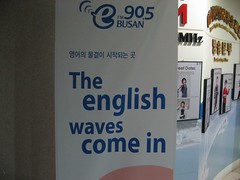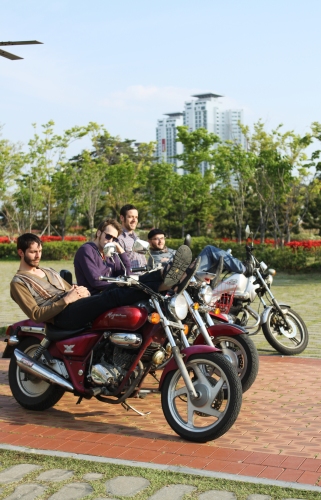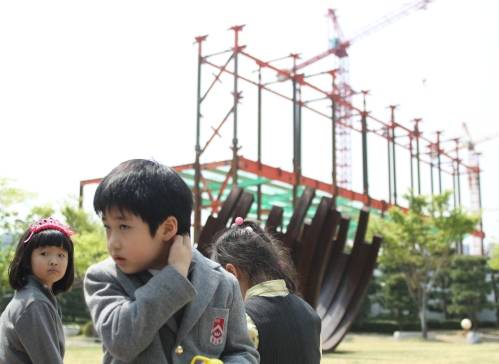Teaching
When you come to teach English in Korea you have a few choices of setting. You can teach at the university level, but that usually requires a Master's degree. You can teach at a public or private school, or you can teach at a hagwon, which is where we are. Now, a hagwon can mean a few different things, but essentially it means that kids come there after their regular public school hours as a kind of extra activity, similar to instrument lessons or tae kwon do. This usually means that the students' parents pay for the classes and have a fair amount of sway in terms of what they want taught, different from public school obviously. This also usually means that your hours are mostly in the afternoon and evening.
In our case, our hagwon is a kindergarten/Montessori school. Half of the building complex is a kindergarten and the other half is a kindergarten/Montessori school solely devoted to the teaching of English. We also each teach some after-school classes like I mentioned above, from 330-430. Then we are done! The hours are pretty favorable for a hagwon, considering many people teach classes well into the evening at other places.
Our students are all kindergarten age, and our afternoon classes are no older than 9. Teaching students this age presents some unique challenges as well as some really fun times. Nikki and I came in with no experience teaching children this age, but we have learned quickly.
We use a few techniques in class to keep things under control, but for the most part the students follow along with us. We have a list of the students' names on the board with 3 stars beside each. If they break a classroom rule, we erase a star. At the end of class, if everyone has 3 stars we usually play a game or do a coloring page or word puzzle. I rarely take any stars away, a stern voice or displeased look usually does the trick. Our rule of no speaking Korean in class is probably violated the most, but I give three chances on that one since it doesn't bother me all that much. Nikki teaches more classes of younger students aged 5 and 6, and I don't know how she does it. She has a serious song and dance show going sometimes when I walk past her room. She'll be able to write a bit more about her style.
One lesson that we have learned is that students this age have an incredibly short memory. It is useless to have rewards or punishments happen any more than 45 minutes later. We try to reward good behavior as soon as possible, and quickly address bad behavior as well. A 6 year old who was drawing on the table and got yelled at by his teacher at 10am will have no recollection of that incident by 1030.
To my eternal bewilderment, the students are also as thrilled by 5 minutes of playing hot potato or hangman as they are with 20 minutes of playground time, movie time, or bags of candy. There is really no difference. If the teacher is excited about a dinosaur coloring page, then the class is too.
Sometimes we joke about being a traveling clown show. We move from room to room doing our English routine: singing the alphabet, drawing and coloring pictures, and leading 5 year olds in chants and dances, only to have most of them asking us things in Korean, rolling around on the floor, asking to go to the bathroom, or picking their noses and examining the discoveries instead of diligently learning the finer points of the English language.
Ultimately, it is a great job. We have to remind each other that we should be just having fun with these kids and not getting to angry or worked up when things don't go well. If they are talking in class, sometimes I just start singing in a crazy voice or acting ridicuouls and they will be quiet in amazement. Some days I don't have the energy to do one more routine, but I just go in with a weird and goofy attitude and things actually go by more smoothly. I think, no one understands me anyway! What's the point of getting angry?
So, hopefully this post gave you a little look into our jobs each day. We hang out with 6 year olds and color and teach them words and read storybooks. It takes a ton of energy and we are beat at the end of the day. But, the days go by super fast and we are given freedom to teach in our own styles. If you have any questions about activities we do or other strategies for our classes, please leave a comment!



































 RSS Feed
RSS Feed
Recent comments